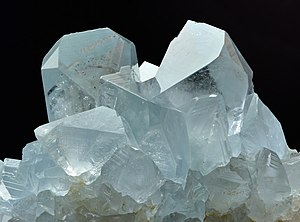|
| This is a Wikipedia
user page. This is not an encyclopedia article or the talk page for an encyclopedia article. If you find this page on any site other than Wikipedia, you are viewing a mirror site. Be aware that the page may be outdated and that the user whom this page is about may have no personal affiliation with any site other than Wikipedia. The original page is located at https://en.wikipedia.org/wiki/User:Pladuk. |
Welcome to my user page. I began using Wikipedia as a resource in 2003 when I was teaching high school, and found it to be a huge help on some of the topics I was teaching. It was interesting to have some uncertainty about the reliability of the articles, but I was usually reading enough sources to verify things, and found that I was rarely, if ever, led astray by the material here. The only thing I remember correcting back then were some poorly phrased sentences on a page about galvanization.
I'm now a web consultant, and have just recently started contributing to Wikipedia. I'm very impressed with the level of activity here and am happy to lend a hand where I can.
I've never kept a blog or really gotten into online communities, but I enjoy the collaboration and productivity of contributing to Wikipedia. Looking forward to more!
I also enjoy construction, arts and crafts (in many mediums), cooking, and outdoor activities such as biking, swimming, hiking, camping, and snowboarding. I like watching movies and exploring new music. I am a news junkie and enjoy keeping up with current events on all topics, but especially science and technology, international news, health, business, and the arts.
|
| This is a Wikipedia
user page. This is not an encyclopedia article or the talk page for an encyclopedia article. If you find this page on any site other than Wikipedia, you are viewing a mirror site. Be aware that the page may be outdated and that the user whom this page is about may have no personal affiliation with any site other than Wikipedia. The original page is located at https://en.wikipedia.org/wiki/User:Pladuk. |
Welcome to my user page. I began using Wikipedia as a resource in 2003 when I was teaching high school, and found it to be a huge help on some of the topics I was teaching. It was interesting to have some uncertainty about the reliability of the articles, but I was usually reading enough sources to verify things, and found that I was rarely, if ever, led astray by the material here. The only thing I remember correcting back then were some poorly phrased sentences on a page about galvanization.
I'm now a web consultant, and have just recently started contributing to Wikipedia. I'm very impressed with the level of activity here and am happy to lend a hand where I can.
I've never kept a blog or really gotten into online communities, but I enjoy the collaboration and productivity of contributing to Wikipedia. Looking forward to more!
I also enjoy construction, arts and crafts (in many mediums), cooking, and outdoor activities such as biking, swimming, hiking, camping, and snowboarding. I like watching movies and exploring new music. I am a news junkie and enjoy keeping up with current events on all topics, but especially science and technology, international news, health, business, and the arts.
